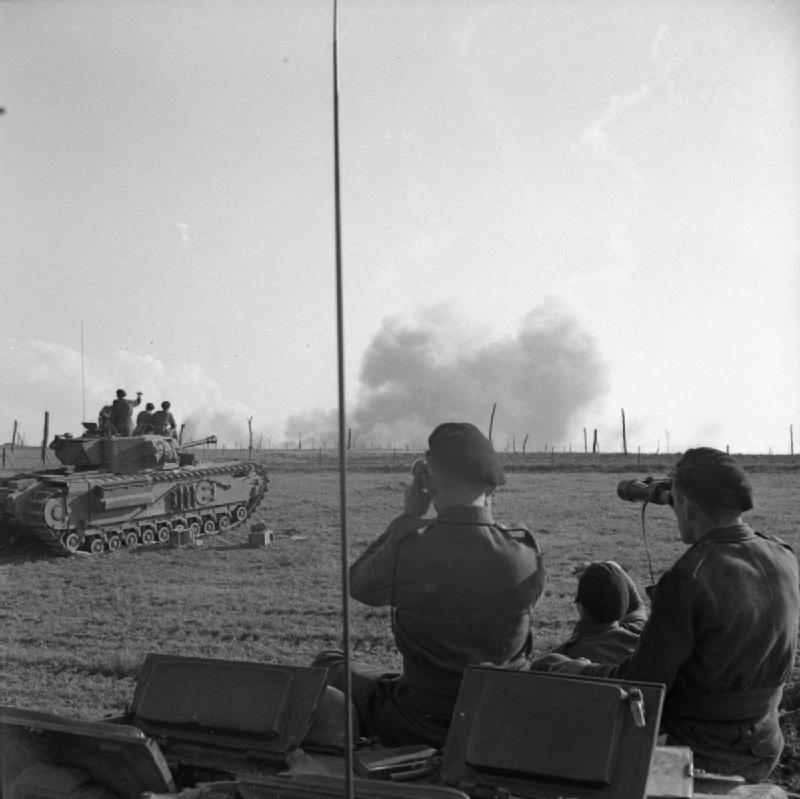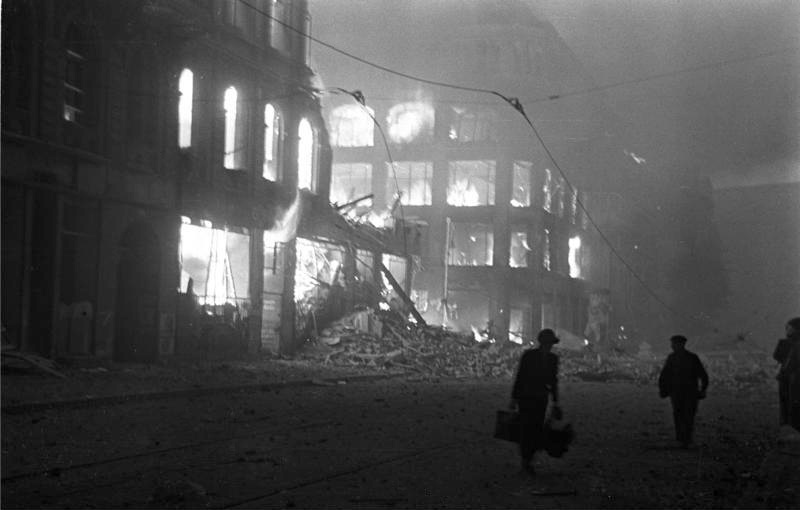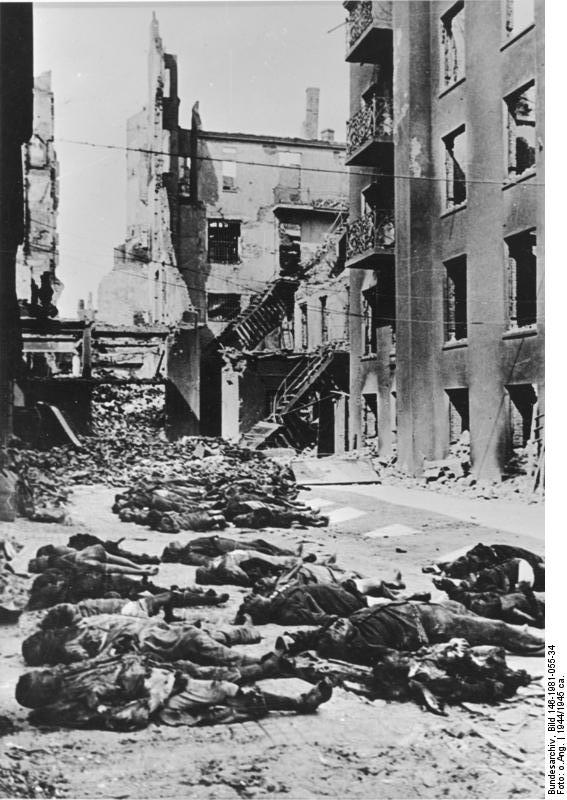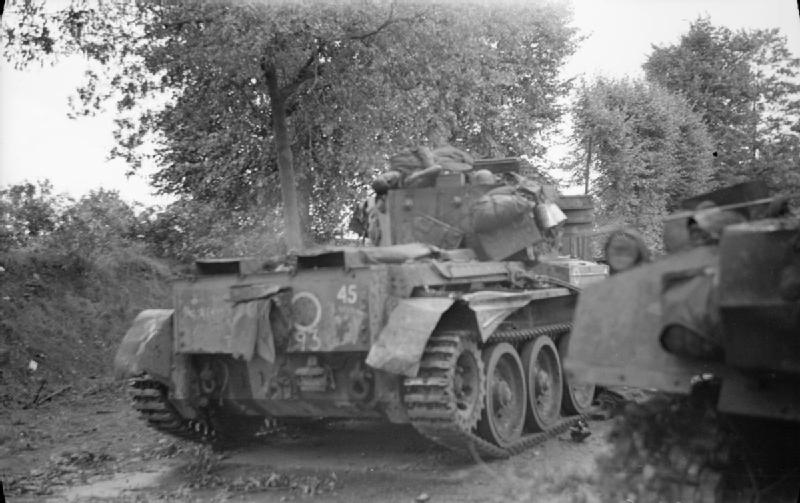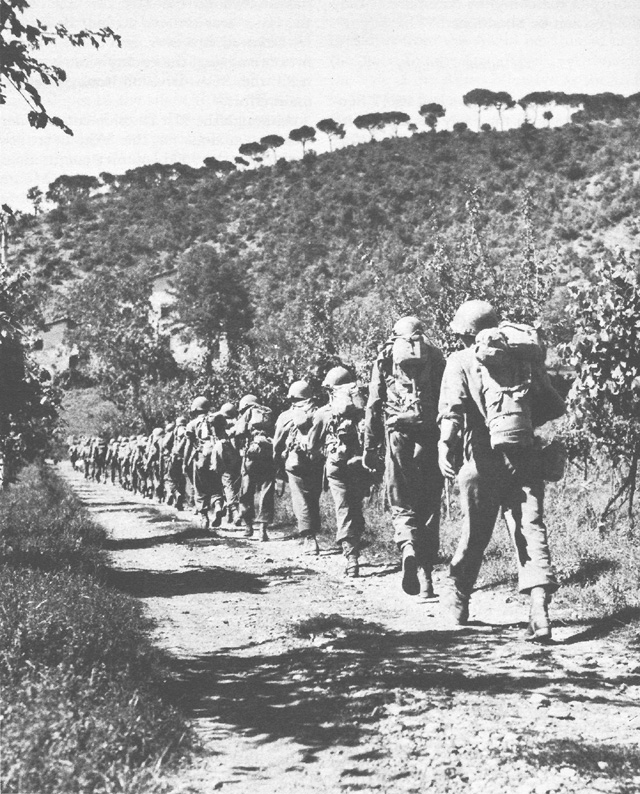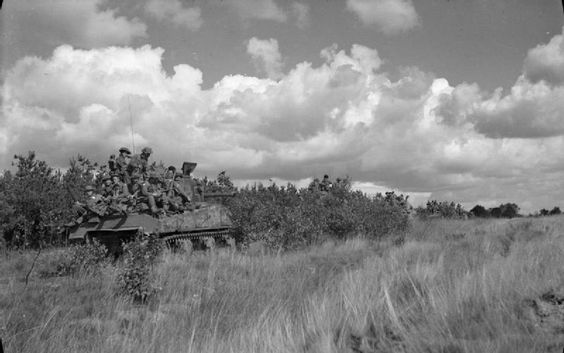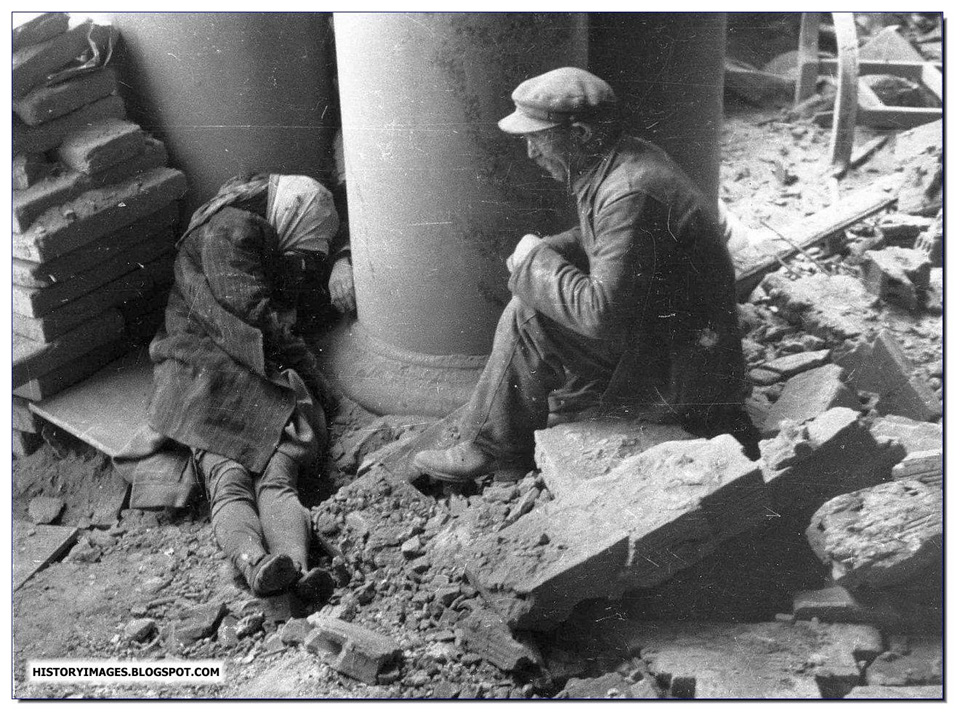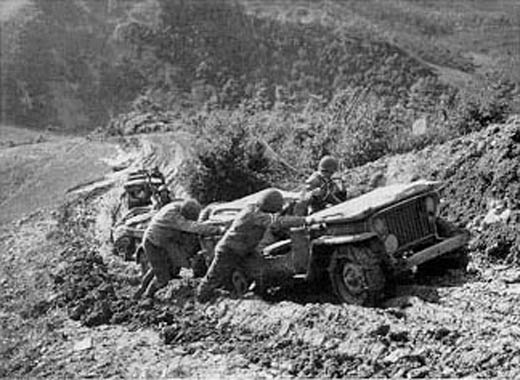Air Operations, Carolines
- While also covering strikes against Mindanao airfields by the rest of Task Force 38, carrier aircraft from Task Group 38.4 begin two days of preinvasion strikes against Japanese antiaircraft and beach defenses at Peleliu and Angaur islands.
- 11th Heavy Bomb Group B-24s based in the Marshall Islands attack the Truk Atoll.
- During the night, 868th Heavy Bomb Squadron SB-24s attack airfields and Japanese defenses in the Palau Islands.
Air Operations, CBI
CHINA- 45 341st Medium Bomb Group B-25s attack Lingling and other cities in east-central China.
- Nearly 140 14th Air Force fighter-bombers mount aggressive sweeps over the Salween River area (including eastern Burma) and southeastern and east-central China.
- 449th Fighter Squadron P-38s and 51st Fighter Group P-51s down 2 Ki-48 'Lily' bombers and 2 Ki-43 'Oscar' fighters over and near Tengchung during a mid-afternoon engagement.
- 24 7th Heavy Bomb Group B-24s transport fuel from India to Kunming.
Air Operations, East Indies
- 380th Heavy Bomb Group B-24s attack the Laha airfield on Ceram.
- FEAF B-24s attack Tomohon (Celebes), port facilities at Menado (Celebes), Wasile Bay (Moluccas), the Langoan, Mapanget and Menado airfields on Celebes, and Hate Tabako airfield.
- B-25s, A-20s, and V Fighter Command P-38s attack oil stores and the Amahai and Boela airfields on Ceram and the Namlea airfield on Boeroe. 1 B-25 and 2 A-20s are downed by ground fire over the Amahai airfield.
Air Operations, Europe
RAF BOMBER COMMANDDaylight Ops:
- 992 aircraft including 521 Lancasters, 426 Halifaxes and 45 Mosquitos, attack 8 different German strongpoints around Le Havre. Each target is marked separately by Pathfinders and then accurately bombed. There are no losses.
Minor Ops:
- 24 aircraft are on Resistance operations and there are 8 RCM sorties. There are no losses.
Minor Ops:
- 47 Mosquitos are sent to Berlin, 2 Lancasters lay mines of Texel, and there are 24 Mosquito patrols and 11 RCM sorties. There are no losses.
ETO:
- During the night, specially equipped 474th Fighter Group P-38s mount night-intruder missions against German Army supply columns.
GERMANY:
- A total of 1,063 8th Air Force B-17s attack marshalling yards at Heilbronn and Ulm, a tank factory at Nurnberg, and aircraft components factory at Furth, the Giebelstadt Airdrome, an engine factory, a jet-engine factory, a motor-transport factory, and several targetsof opportunity. Tested in combat for the first time on this mission is the GB-4 radio- and visually controlled guided bomb.
- 7 heavy bombers are lost
- 121 VIII Fighter Command P-47s atrafe targets around Cologne, Frankfurt am Main, and Kassel.
- 8th and 9th Air Force fighter pilots down 8 Luftwaffe aircraft over Germany between 1115 and 1445 hours.
FRANCE:
- Approximately 340 IX Bomber Command B-26s and A-20s attack a rail bridge at Custines, a road bridge spanning the Moselle River, and several ammo dumps and strongpoints.
- The XIX TAC helps stem a violent German counterattack against US 3rd Army units holding bridgeheads across the Moselle River near Arry.
- IX Troop Carrier Command transports complete more than 800 supply and evacuation sorties.
- The 9th Air Force advance headquarters lays out a program for the interdiction of rail lines on both sides of the Rhine River through early October by IX and XIX TAC fighter-bomber groups.
FRANCE:
- 12th Air Force fighter-bombers attack rail lines around Belfort and Dijon.
- 12th Air Force B-25s and B-26s attack bridges in the Po River valley and four supply and ammo dumps.
- XII TAC fighter-bombers support the Allied ground assault on the Gothic Line with attacks on lines of communication and various dumps.
AUSTRIA:
- 344 15th Air Force B-17s and B-24s attack the Horsching Airdrome, five ordnance depots, two oil refineries, and industrial areas around Vienna.
- 24 15th Air Force B-24s transport supplies to Lyon.
- 88 15th Air Force B-24s attack the harbor at Trieste.
Air Operations, New Guinea
V Bomber Command A-20s and V Fighter Command fighter-bombers attack the airfields at Manokwari, Moemi, Nabire, Ransiki, Sagan, and Samate.
[Air Operations, Philippines
- Carrier aircraft from Task Force 38 continue to attack targets on Mindanao in support of the upcoming invasion of the Palau Islands.
- Carrier-based F6Fs down 3 Ki-46 'Dinah' reconnaissance planes, 1 J1N 'Irving' fighter, and 1 D3A 'Val' dive bomber over Mindanao between 0730 and 0845 hours.
Air Operations, Volcano Islands
30th Heavy Bomb Group B-24s based at Saipan attack Iwo Jima and shipping off Iwo Jima.
[Black Sea
- After U-18 is damaged by the advancing Soviet armies, the choice for the crew of U-19 is between scutlling off the Soviet Union and becoming POWs or scuttling near Turkey and becoming interned in Turkey. They chose the latter.
- U-20 chose the same fate as U-19.
- U-23 also opted for scuttling near Turkey.
|
|
| Class | Type IIB |
| CO | Oberleutnant zur See Rolf Wahlen |
| Location | Black Sea, off Ergeli, Turkey |
| Cause | Scuttling |
| Casualties | Unknown |
| Survivors | Unknown |
Diplomatic Relations
The Russo-Finnish Armistice is signed in Moscow ending their 3-year war. The Finns agree to pay reparations but get the borders restored to the 1940 positions.
[Eastern Front
The 1st Belorussian Front attacks German forces in Praga, outside Warsaw. Warsaw's mayor appeals for immediate Allied aid. Stalin approves the use of Russian airfields for British and US planes to drop supplies to the Polish forces in Warsaw.
CENTRAL SECTORThe 47th Army launches a fierce attack into the Warsaw suburb of Praga but is held in the strong German defenses. The 1st Panzer Army is holding off the Soviet 38th Army near Krosno.
SOUTHERN SECTORThe 38th Army fights its way into Krosno but is unable to press any farther due to the arrival of German reinforcements.
[India, Home Front
The Commission of Inquiry into the Fort Stikine disaster publishes its findings. It concludes there was a faulty loading of the ship, negligence by the captain and uncoordinated emergency services.
[Italy
The Allied offensive to reduce the 'Gothic' Line continues. In the US 5th Army sector the Allies cross the Serchio River at Vecchiano, capture Villa Basilica and cross the Sieve. But in the east, units of the German 10th Army keep up their powerful resistance on the summits of the Gemmano and Coriano hills.
[Pacific
- The US submarine Sunfish (SS-281) sinks the Japanese merchant tanker Chihaya Maru (4701t) east of Quelpart Island.
- Two Japanese ships are lost to mines: the army tanker Bukun Maru (3029t) in the Strait of Malacca and the merchant tanker No.2 Hoei Maru (834t) off Woosung, China.
Palau Islands
Aircraft from a fast US carrier task force under Rear-Adm Ralph E. Davison carry out a heavy raid, repeated the next day, against Japanese defenses on the islands of Peleliu and Angaur, in preparation for the invasion.
[United States, Policy
W. Averell Harriman, ambassador to the Soviet Union, reports on changing attitudes of the Soviet leadership in recent weeks. Harriman believes that the American emphasis on cooperation and friendship may be misunderstood as weakness by the Soviet leadership. "Unless we take issue with the present policy there is every indication the Soviet Union will become a world bully wherever their interest are involved."
[Western Front
Gen Eisenhower decides to postpone the operation to liberate the port of Antwerp. Eisenhower accepts Montgomery's proposal that an airborne operation should be mounted to take the bridges over a series of canals and rivers in Holland, namely at Arnhem, Grave and Eindhoven. This operation will be known as MARKET GARDEN and is designed to allow a rapid advance into Germany. It is based on the assumption that the Germans have only light forces in the relevant areas and will not be able to prevent the advance of ground forces to link up with the paratroops. The operation will begin on September 17.
After a heavy air raid in which Allied bombers dropped 5,000 tons of bombs and a shelling by the battleship Warspite and the monitor Erebus, in preparation for an Allied assault, the British 49th and 50th Divisions launch a general offensive against Le Havre, and succeeds in piercing German defenses. The Canadians of II Corps occupy Ostend. Troops from US 1st Army enter Luxembourg.
The French II Corps enters Dijon. At Sombernon the 1st Div mades contact with the French 2nd Arm Div, XV Corps, 3rd Army.
[Images from September 10, 1944
|
|
|
|
|
|
|
|
